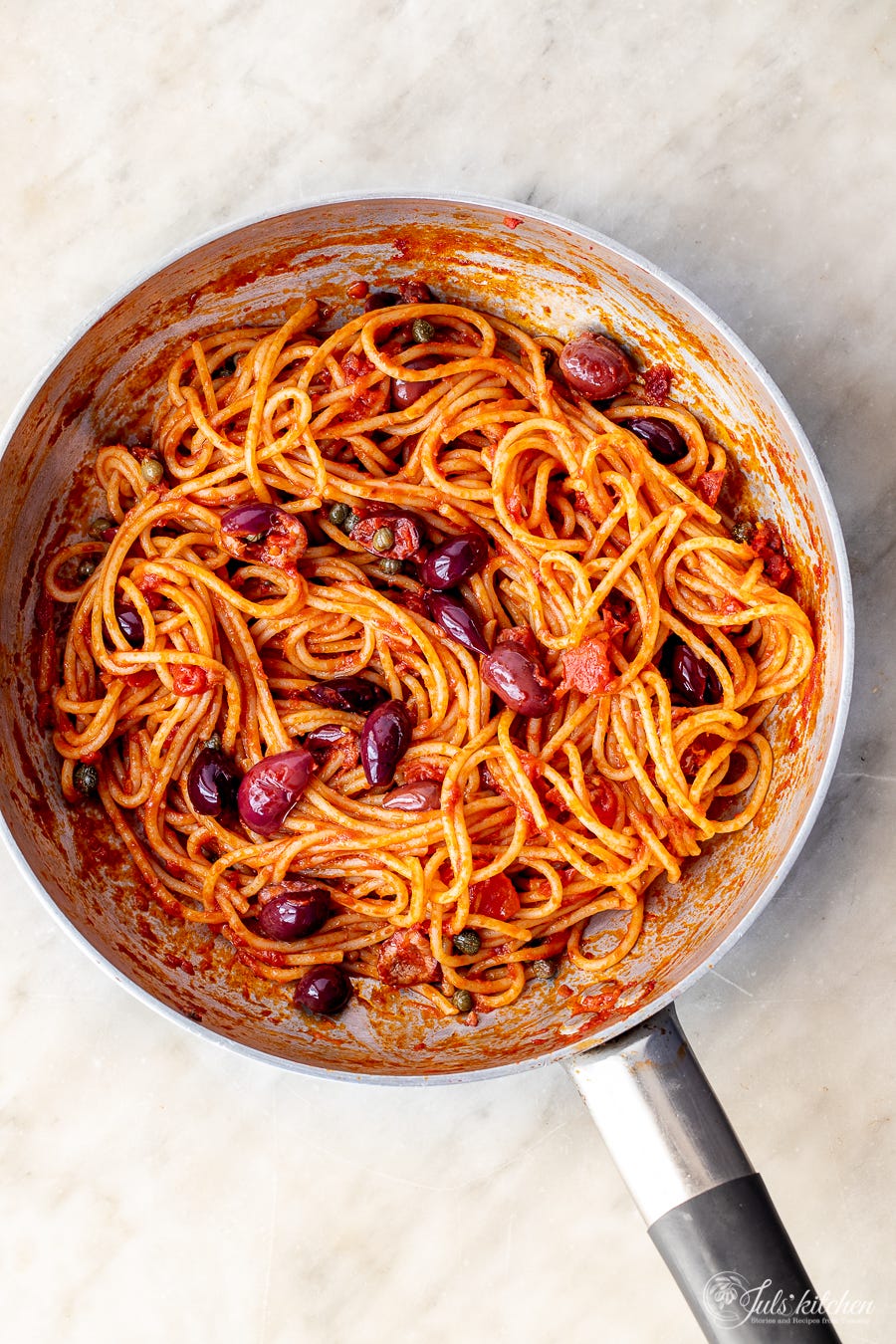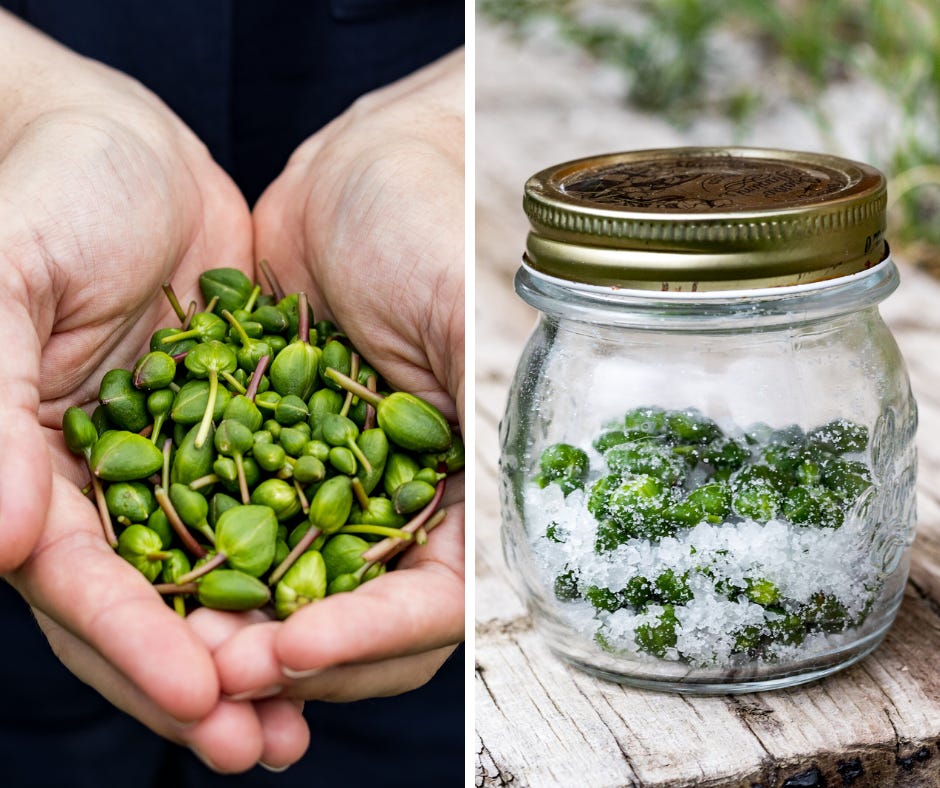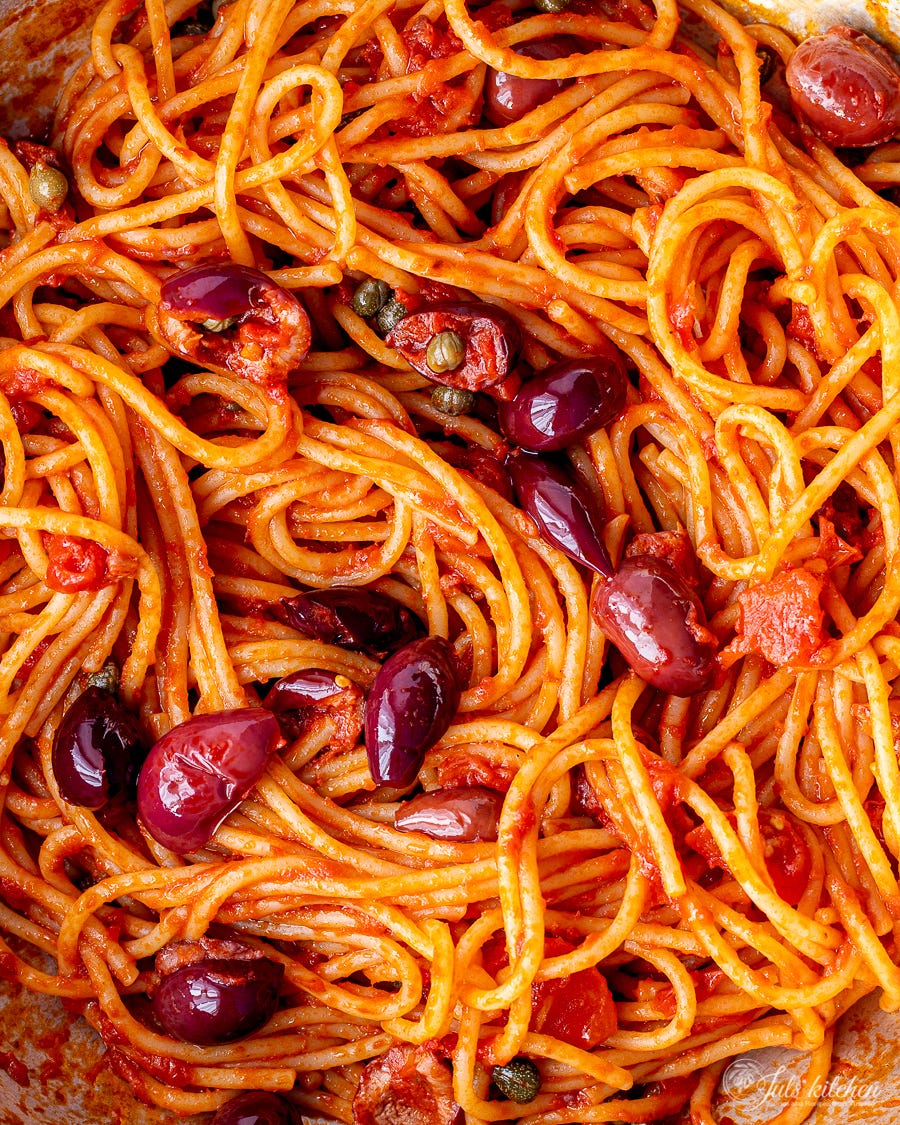[Pantry] Pasta alla puttanesca
Pasta alla puttanesca is a hymn to pantry staples, a punchy pasta dish that you can whip up in less than 20 minutes, while you’re cooking your spaghetti.
February, we’re here to celebrate the pantry and the resourcefulness of Italian cuisine. I asked you which are your must-have ingredients in the pantry, and many of you mentioned canned tomatoes, olives, anchovies, capers, so I had to make pasta alla puttanesca, a hymn to pantry staples, a punchy pasta dish you can whip up in less than 20 minutes, while you’re cooking your pasta.
We could spend hours talking about the origins of this dish, the reasons behind its name, but I think I wouldn’t add anything to the conversation. What I can say is that pasta alla puttanesca is a relatively modern recipe, born in the ’50s or ‘60s in Naples, or Ischia, or in the surrounding area, made with simple, affordable ingredients such as canned tomatoes, capers, anchovies, and olives. Was it really made by prostitutes to lure in clients as the name suggests? Or is it related to a sloppy (slattern, as Nigella would say) way of cooking, using pantry ingredients rather than fresh ones?
______
Read more about pasta alla puttanesca here:
Quali sono le origini della Pasta alla Puttanesca e il nome è davvero offensivo? (in Italian) Giorgia Cannarella interviews food historians and food writers to trace back the origins of pasta alla puttanesca and the reasons for its name (spoiler: it is not possible to define when the recipe was born and why it has this name).
Nigella’s recipe for Slattern’s spaghetti. A few months ago the Italian newspaper Corriere totally misunderstood Nigella’s words, and she had to firmly reply with a Tweet: non è vero, it is not true.
The origins of Sugo alla puttanesca? Food and wine historian Jeremy Parzen goes through several historical sources and affirms that: the origin of sugo alla puttanesca probably lies some where between the isle of Ischia and the Amalfitan coast, where tomatoes, capers, olives, anchovies, and garlic are ingredients of choice. It’s clear that the dish emerged sometime after World War II when tomato-based sauces grew in popularity among the Italian middle class.
______
What I really want to do is to celebrate the resourcefulness of this dish, its thrifty appearance – it was a fixture at the cafeteria at the university – that gives way to a punchy flavour, an umami richness that makes this dish filling, satisfying, and mouth-watering.
Let’s have a look at the ingredients
Everything you need to make an outstanding puttanesca is already in your pantry.
Capers.
I use tiny salt-packed capers I buy by the bucket in Salento when we visit Tommy’s family. They are packed with flavour, an essential ingredient in my pantry, an umami boost in any potato salad or rice salad, and also in my tuna and fresh herb pasta sauce and sun-dried tomato and tuna pesto.
I am partial to salt-packed capers, but brined capers would work just as well, as long as you rinse them thoroughly. Last year I finally found a bush of capers growing in a South facing stone wall not far from home, and for the first time I cured and preserved my own capers and caper berries: they’ll soon be part of my cooking repertoire.
Olives.
Use pitted black olives – opt for whole olives, and stay away from those pre-sliced olives that don’t even have a taste - or search for olive di Gaeta, dark purple Italian olives with a meaty, consistent texture and a pleasant, slightly bitter taste.
Have you got a jar of black olives in your pantry? They would be perfect also for my green bean and potato salad, for chicken cacciatore, and for this Sicilian stewed swordfish. Pizza di scarole is another classic regional dish, belonging to the Neapolitan tradition, a stuffed focaccia, with a fluffy crust made with a potato bread dough, and a filling of bitter escarole, pine nuts, tamed down by black olives, capers, and anchovies, along with the ubiquitous extra virgin olive oil and chilli pepper.
Anchovies.
I have already sung my praise to anchovies. Anchovies can become your secret ingredient in the kitchen when slowly melted in warm olive oil. They add an umami boost not only to seafood dishes and soups but also to meat stews and braises, to salad vinaigrettes and vegetable stir-fries. The added flavour is not fishy at all, it just enhances all the other flavours. In the case of pasta alla puttanesca, the anchovies are slowly melted in the olive oil, thus enhancing all the other flavours.
Canned tomatoes.
They do not need an introduction. Whether you preserve your own tomatoes during the summer or buy a good quality brand at your local supermarket, they are the foundation of so many classic recipes. They become a quick sauce with some garlic and olive oil, or a vegetable ragù with some veggie scraps, a meal on their own with a poached egg, or with some day-old bread.
Spaghetti alla puttanesca
Combine all these ingredients together, and they will give life to a dish that is more than just the sum of its part, spaghetti alla puttanesca.







